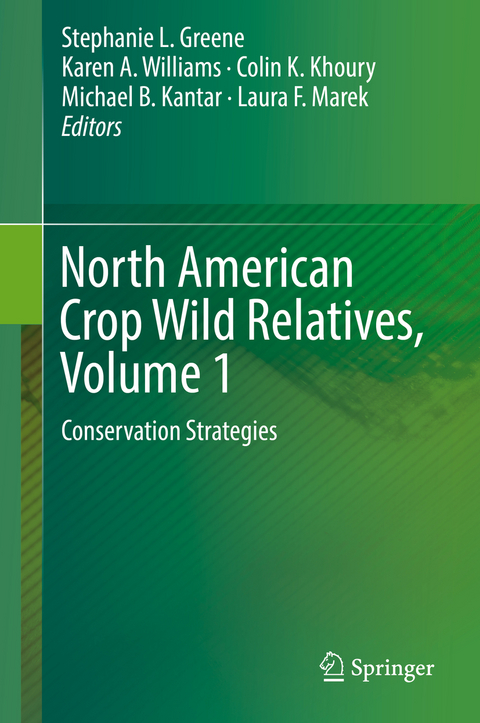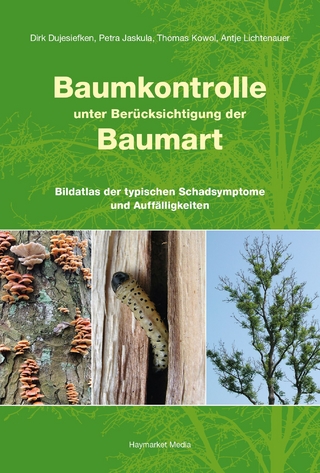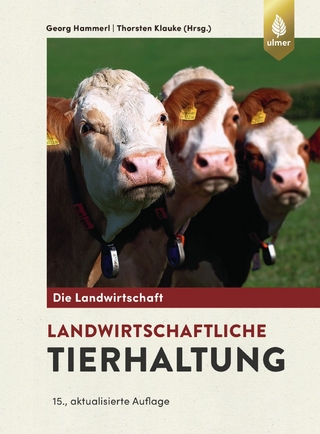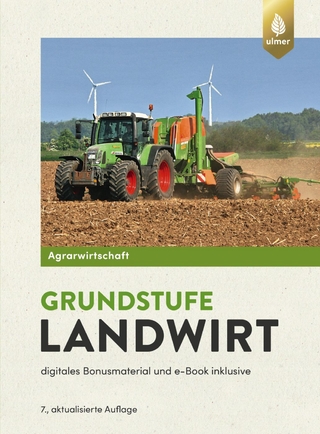
North American Crop Wild Relatives, Volume 1
Springer International Publishing (Verlag)
978-3-319-95100-3 (ISBN)
The plant species that humans rely upon have an extended family of wild counterparts that are an important source of genetic diversity used to breed productive crops. These wild and weedy cousins are valuable as a resource for adapting our food, forage, industrial and other crops to climate change. Many wild plant species are also directly used, especially for revegetation, and as medicinal and ornamental plants. North America is rich in these wild plant genetic resources. This book is a valuable reference that describes the important crop wild relatives and wild utilized species found in Canada, the United States and Mexico. The book highlights efforts taken by these countries to conserve and use wild resources and provides essential information on best practices for collecting and conserving them. Numerous maps using up-to-date information and methods illustrate the distribution of important species, and supplement detailed description on the potential value these resources have to agriculture, as well as their conservation statuses and needs. There is broad recognition of the urgent need to conserve plant diversity; however, a small fraction of wild species is distinguished by their potential to support agricultural production. Many of these species are common, even weedy, and are easily overshadowed by rare or endangered plants. Nevertheless, because of their genetic proximity to agriculturally important crops or direct use, they deserve to be recognized, celebrated, conserved, and made available to support food and agricultural security. This comprehensive two-volume reference will be valuable for students and scientists interested in economic botany, and for practitioners at all levels tasked with conserving plant biodiversity.
The chapters 'Public Education and Outreach Opportunities for Crop Wild Relatives in North America' and 'Genetic Resources of Crop Wild Relatives - A Canadian Perspective' are open access under a CC BY 4.0 license via link.springer.com.
Stephanie L. Greene is a Supervisory Plant Physiologist at the USDA Agricultural Research Service National Laboratory for Genetic Resource Preservation and affiliate faculty member with the Soil and Crop Science Department at Colorado State University, Fort Collins, Colorado. She holds a PhD in Plant Breeding from Kansas State University, Manhattan, Kansas. Her responsibilities with the US National Plant Germplasm System started 26 years ago, working as a vegetable and forage gene bank operations manager in Geneva, New York, then as the USDA temperate forage legume curator in Prosser, Washington, and now as seed curator for the NPGS security back up seed collections. Her research interest is the ex situ conservation of plant genetic resources, especially crop wild relatives native to North America. Karen A. Williams is a Botanist with the USDA Agricultural Research Service National Germplasm Resources Laboratory in Beltsville, Maryland. She has an MS in Soil Science from the University of Florida, Gainesville, Florida. She manages the Plant Exploration Program for the US National Plant Germplasm System and has overseen the adaptation of the Program to the changing international regime on access and benefit sharing over the past 20 years. She has been involved in the collection, conservation and documentation of crop wild relatives in several countries. One of her current interests is the development of partnerships among different institutions to link in situ and ex situ conservation of crop wild relatives in the United States. Colin K. Khoury is a Research Associate at the USDA Agricultural Research Service National Laboratory for Genetic Resources Preservation in Fort Collins, Colorado, and a Crop Diversity Specialist at the International Center for Tropical Agriculture (CIAT), Colombia. He holds a PhD in Production Ecology and Resource Conservation from Wageningen University, Netherlands. Colin's research interest is in enhancing food security, human health, and the sustainability of agricultural production systems through the conservation and use of crop genetic resources. He is particularly interested in the wild relatives of crops native to the United States.
Securing economically important wild plant species in North America.- Sampling wild species to conserve genetic diversity.- Practicalities of collecting.- Challenges of storing seed of wild species.- Seed production in wild species.- In situ strategies to conserve genetic resources.- Canada.- USA.- Mexico.- Indigenous.- Forging partnerships.- Maize.- Beans.- Grain and cereal crops.- Leafy or stem vegetables.- Root, bulb or tuberous vegetables.- Fruit bearing vegetables.- Temperate small fruits.- Grape.- Temperate tree fruits.- Nut.- Tropical tree fruits.- Sunflower.- Industrial crops.- Forage and turf.- Revegetation species.- Herbaceous ornamentals.- Woody ornamentals.- Aromatics.- Medicinal.
| Erscheinungsdatum | 02.12.2018 |
|---|---|
| Zusatzinfo | XXV, 346 p. 48 illus., 39 illus. in color. |
| Verlagsort | Cham |
| Sprache | englisch |
| Maße | 155 x 235 mm |
| Gewicht | 715 g |
| Themenwelt | Weitere Fachgebiete ► Land- / Forstwirtschaft / Fischerei |
| Schlagworte | climate change • Crop adaptation • Economically valuable plants • plant conservation • plant genetic resources |
| ISBN-10 | 3-319-95100-9 / 3319951009 |
| ISBN-13 | 978-3-319-95100-3 / 9783319951003 |
| Zustand | Neuware |
| Haben Sie eine Frage zum Produkt? |
aus dem Bereich


